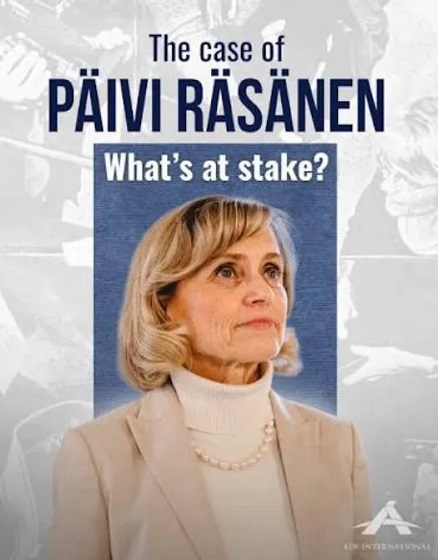Opinion
Thoughts from Tom Chapman on keeping the Molly Banister Extension

The Molly Banister extension should not be removed from the City plan for the following reasons:
- This street extension was included in the original development plan at the time of the Bower Centre Mall and the Bower subdivision, recognising the need to provide proper future access to the shopping centre and commercial developments both north of the Mall and on Gaetz Avenue, as well as the projected population growth in future eastern residential subdivisions.
- The City has continued to grow in those areas, with planning currently as far as 20th Avenue, and the need for increased access to the Bower Mall and neighboring businesses will continue.
- The current left turn access for westbound traffic to the Mall from 32 Street via 47th Avenue was opposed by many, and hotly debated by Council at the time. Clearly access via Molly Banister would take a traffic load off 32st., and 47th Avenue which was never designed to provide access to the Mall.
- If the extension is removed from the plan and the lands are converted to residential use the ability to provide proper access to businesses in Bower and on Gaetz Avenue will be forever lost, unless the City is prepared to go to the huge costs of a future expropriation.
- Unless there has been some changes to planning legislation, City development bylaws, or required standards, the developer is required to dedicate lands for all roads required for it’s development, as well as a percentage for park and playground areas.
- The Developer, with decades of experience in the City, would be well aware of this requirement in determining what it was prepared to pay for the land.
- Clearly, If the Developer can persuade Council to remove the extension this will result in housing development on the extension area, increased profit for the developer, and long term detriment of the City. A huge benefit for the developer!
- Currently 19th Street provides direct convenient access to Gasoline Alley to the detriment of City businesses and particularly the downtown. By eliminating the ability to develop the extension and push more traffic on to 19th Street the City will increase the attractiveness of Gasoline Alley for more businesses to develop there or relocate from within the City downtown and other areas, and will not take any pressure off 32 street. I would think that the Downtown Business Association should be concerned, as well as businesses along south Gaetz Ave.
- The next concern is 32 street. The City proposal to expand 32 street would require six lanes over Piper Creek. Otherwise keeping it at 4 lanes creates a bottleneck that would restrict traffic flow and increase traffic on 47 Avenue. The impact of this expansion upon the value of adjacent homes cannot be underestimated. Currently hundreds of thousand dollars are being spent to stabilize the current structure over Piper Creek. I prefer to an early start on construction of the extension and spending the money on a proper overpass of Piper creek on the extension route rather than expansion of the current overpass on 32 Street.
Removal of the Extension is a mistake!
Respectfully submitted
Thomas Chapman
I think it will be really important for your group to get strong representation from Bower Mall
which I think would be most adversely affected if the eastern access from 22 street to Molly Banister is eliminated.
I think they have always relied on the promised Molly Banister extension being built, and
I can’t imagine that they proceeded with the recent upgrades to the Mall without this in mind.
They may have had some discussions or assurances from City planners?
Also there are other businesses in the area such as Sim’s Furniture, new businesses in the
former Legion building and on Geatz Avenue which may have concerns.
One point I did miss is that the westerly end of Molly Banister leads to direct access to Taylor Drive
and this could take pressure off 32 Street.
Tom
Opinion
Religion on trial: what could happen if Canada passes its new hate speech legislation

Just in time for Christmas, the Liberals make a deal with the Bloc that will suppress religious expressions of belief
(The Rewrite will return to its usual format in 2026. In the meantime please enjoy this republication of Peter Menzies’s take on Bill C-9 and its threat to free speech and freedom of religion. And, please, have a Merry Christmas)
If you want to get some sense of what life in Canada could be like if the federal government’s new hate speech law passes, check out Finland.
There, Päivi Räsänen, a medical doctor and Member of Parliament, and Bishop Juhana Pohjola of the Evangelical Lutheran Mission Diocese of Finland are awaiting the verdict of their third hate speech trial – all for the same issues – since 2019.
The prospect of a similar future “Bible Trial” now hangs over Canada thanks to the minority government’s openness to making a deal with the Bloc Quebecois to get Bill C-9 – An Act to amend the Criminal Code (hate propaganda, hate crime and access to religious or cultural places) – passed.
Already contentious, the contemplated amendment that would remove the current protections for sincerely held religious belief, could very well stifle the ability of Christians, Muslims, Jews and others to freely refer to their most sacred texts.
As the Canadian Conference of Catholic Bishops puts it: “the removal of this provision risks creating uncertainty for faith communities, clergy, educators, and others who may fear that the expression of traditional moral or doctrinal teachings could be misinterpreted as hate speech and could subject the speaker to proceedings that threaten imprisonment of up to two years.
“Eliminating a clear statutory safeguard will likely therefore have a chilling effect on religious expression, even if prosecutions remain unlikely in practice.”
Rasanen, Finland’s former Interior Minister, was charged under a section of the Finnish criminal code titled “war crimes and crimes against humanity” after jointly publishing a 2004 pamphlet with Pohjola that described traditional religious views on marriage and sexuality. Also involved were a 2019 live radio debate and a Tweet in which she questioned a decision by Finland’s majority church, the Finnish Evangelical Lutheran Church, to formally support a Helsinki Pride event.
Both she and Pohjola were acquitted at their initial trial and, again unanimously, upon appeal. The prosecution, determined to get convictions, then took the case all the way to Finland’s Supreme Court, where the third trial wound up on Oct. 30. At the time of writing, a verdict is pending. The accused face up to two years in prison if convicted.
Given that a total of six judges have, so far, not been convinced thay quoting Bible passages constitutes a hate crime, that level of punishment seems unlikely. But as Rasanen has written “the greatest danger is the threat of society-wide censorship and the crushing effect on freedom of speech and religion. A judgment against me would open the floodgates to a broad ban on the public expression of religious views or other beliefs and the threat of modern book burnings.”
While that may alarm those of us who still adhere to increasingly old-fashioned views on freedom and liberal democracy, there’s no doubt that the move to suppress religious expression – and some of its very unfashionable concerns regarding sexuality – has a strong fan base.
Quebec, where a crucifix inexplicably remains mounted in the National Assembly, appears particularly keen on this approach. Its Bill 21 banned the wearing of religious symbols or clothing by certain public employees and is now being extended to daycare workers and others. Its “burka ban” also insists a person’s face must be uncovered when receiving public services and is making it illegal to pray in public without government permission.
Prompted by the mass Islamo-Leftist coalition demonstrations that have occupied Montreal’s streets for the past two years, it seems unlikely that one would be busted for bowing one’s head to commune with the Almighty while sitting on a park bench. But the fact that it might be possible could just be enough to discourage one from doing so.
This is why the Bloc Quebecois is so keen to assert its leverage within a minority Parliament and stands ready to assist its passage if the exemption (“if, in good faith, the person expressed or attempted to establish by an argument an opinion on a religious subject or an opinion based on a belief in a religious text”) within current hate speech legislation for people sincerely motivated by their faith is removed.
Indeed, Bloc leader Yves-Francois Blanchet believed he had a deal but that the Liberals, led by a regular attendant at Roman Catholic Mass – Prime Minister Mark Carney – “fear a backlash” and may try to find another dance partner. That hesitance, according to Blanchet, may have motivated the suspension of a (Dec. 4) House of Commons Justice Committee.
Conservative MP Andrew Lawton also wondered on X if the committee was putting the bill on hold, stating “The Liberal chair of the Justice Committee says he cancelled today’s Bill C-9 meeting so MPs could “regroup.” He refuses to say whether he’ll call next Tuesday’s meeting.”
The deal now appears to be locked in, although Justice Minister Sean Fraser promised concerned faith groups he would hear them out over the winter.
Meanwhile, the very idea that the exemption might be removed has lit up Conservative Leader Pierre Poilievre, who, already opposed to Bill C-9 because of its restrictions on free speech, declared that it would “criminalize sections of the Bible, Qur’an, Torah and other sacred texts.”
I don’t know that it would. But it could. And that should be enough to alarm all those who believe in a God greater than the state. Just in time for Christmas, or whatever our politicians call it these days.
We note with sadness the passing Wednesday of Peter Arnett, whose work will be remembered vividly by those old enough to recall the first Gulf War and CNN’s hey day.
A New Zealander and later American too, Arnett made his name in war zones reporting for Associated Press, beginning in Vietnam. He won a Pulitzer prize for his sins, experienced controversy and lived to be 91. He tried and that’s all you can ask. Farewell, faithful servant.

Readers will notice a new DONATE button has been added. Please consider making use of it and help us save journalism from bad journalism.
(Peter Menzies is a commentator and consultant on media, Macdonald-Laurier Institute Senior Fellow, a past publisher of the Calgary Herald, a former vice chair of the CRTC and a National Newspaper Award winner. This commentary originally appeared in Epoch Times Canada)
The Rewrite is a reader-supported publication.
To receive new posts and support my work, consider becoming a free or paid subscriber.
Business
There’s No Bias at CBC News, You Say? Well, OK…

It’s been nearly a year since I last wrote about the CBC. In the intervening months, the Prescott memo on bias at the BBC was released, whose stunning allegations of systemic journalistic malpractice “inspired” multiple senior officials to leave the corporation. Given how the institutional bias driving problems at the BBC is undoubtedly widely shared by CBC employees, I’d be surprised if there weren’t similar flaws embedded inside the stuff we’re being fed here in Canada.
Apparently, besides receiving nearly two billion dollars¹ annually in direct and indirect government funding, CBC also employs around a third of all of Canada’s full time journalists. So taxpayers have a legitimate interest in knowing what we’re getting out of the deal.
Naturally, corporate president Marie-Philippe Bouchard has solemnly denied the existence of any bias in CBC reporting. But I’d be more comfortable seeing some evidence of that with my own eyes. Given that I personally can easily go multiple months without watching any CBC programming or even visiting their website, “my own eyes” will require some creative redefinition.
So this time around I collected the titles and descriptions from nearly 300 stories that were randomly chosen from the CBC Top Stories RSS feed from the first half of 2025. You can view the results for yourself here. I then used AI tools to analyze the data for possible bias (how events are interpreted) and agendas (which events are selected). I also looked for:
- Institutional viewpoint bias
- Public-sector framing
- Cultural-identity prioritization
- Government-source dependency
- Social-progressive emphasis
Here’s what I discovered.
Story Selection Bias
Millions of things happen every day. And many thousands of those might be of interest to Canadians. Naturally, no news publisher has the bandwidth to cover all of them, so deciding which stories to include in anyone’s Top Story feed will involve a lot of filtering. To give us a sense of what filtering standards are used at the CBC, let’s break down coverage by topic.
Of the 300 stories covered by my data, around 30 percent – month after month – focused on Donald Trump and U.S.- Canada relations. Another 12-15 percent related to Gaza and the Israel-Palestine conflict. Domestic politics – including election coverage – took up another 12 percent, Indigenous issues attracted 9 percent, climate and the environment grabbed 8 percent, and gender identity, health-care worker assaults, immigrant suffering, and crime attracted around 4 percent each.
Now here’s a partial list of significant stories from the target time frame (the first half of 2025) that weren’t meaningfully represented in my sample of CBC’s Top Stories:
- Housing affordability crisis barely appears (one of the top voter concerns in actual 2025 polls).
- Immigration levels and labour-market impact.
- Crime-rate increases or policing controversies (unless tied to Indigenous or racialized victims).
- Private-sector investment success stories.
- Any sustained positive coverage of the oil/gas sector (even when prices are high).
- Critical examination of public-sector growth or pension liabilities.
- Chinese interference or CCP influence in Canada (despite ongoing inquiries in real life).
- The rest of the known galaxy (besides Gaza and the U.S.)
Interpretation Bias
There’s an obvious pattern of favoring certain identity narratives. The Indigenous are always framed as victims of historic injustice, Palestinian and Gazan actions are overwhelmingly sympathetic, while anything done by Israelis is “aggression”. Transgender representation in uniformly affirmative while dissent is bigotry.
By contrast, stories critical of immigration policy, sympathetic to Israeli/Jewish perspectives, or skeptical of gender medicine are virtually non-existent in this sample.
That’s not to say that, in the real world, injustice doesn’t exist. It surely does. But a neutral and objective news service should be able to present important stories using a neutral and objective voice. That obviously doesn’t happen at the CBC.
Consider these obvious examples:
- “Trump claims there are only ‘2 genders.’ Historians say that’s never been true” – here’s an overt editorial contradiction in the headline itself.
- “Trump bans transgender female athletes from women’s sports” which is framed as an attack rather than a policy debate.
And your choice of wording counts more than you might realize. Verbs like “slams”, “blasts”, and “warns” are used almost exclusively describing the actions of conservative figures like Trump, Poilievre, or Danielle Smith, while “experts say”, “historians say”, and “doctors say” are repeatedly used to rebut conservative policy.
Similarly, Palestinian casualties are invariably “killed“ by Israeli forces – using the active voice – while Israeli casualties, when mentioned at all, are described using the passive voice.
Institutional Viewpoint Bias
A primary – perhaps the primary job – of a serious journalist is to challenge the government’s narrative. Because if journalists don’t even try to hold public officials to account, then no one else can. Even the valuable work of the Auditor General or the Parliamentary Budget Officer will be wasted, because there will be no one to amplify their claims of wrongdoing. And Canadians will have no way of hearing the bad news.
So it can’t be a good sign when around 62 percent of domestic political stories published by the nation’s public broadcaster either quote government (federal or provincial) sources as the primary voice, or are framed around government announcements, reports, funding promises, or inquiries.
In other words, a majority of what the CBC does involves providing stenography services for their paymasters.
Here are just a few examples:
- “Federal government apologizes for ‘profound harm’ of Dundas Harbour relocations”
- “Jordan’s Principle funding… being extended through 2026: Indigenous Services”
- “Liberal government announces dental care expansion the day before expected election call”
Agencies like the Bank of Canada, Indigenous Services Canada, and Transportation Safety Board are routinely presented as authoritative and neutral. By contrast, opposition or industry critiques are usually presented as secondary (“…but critics say”) or are simply invisible. Overall, private-sector actors like airlines, oil companies, or developers are far more likely to be criticized.
All this is classic institutional bias: the state and its agencies are the default lens through which reality is filtered.
Not unlike the horrors going on at the BBC, much of this bias is likely unconscious. I’m sure that presenting this evidence to CBC editors and managers would evoke little more than blank stares. This stuff flies way below the radar.
But as one of the AI tools I used concluded:
In short, this 2025 CBC RSS sample shows a very strong and consistent left-progressive institutional bias both in story selection (agenda) and in framing (interpretation). The outlet functions less as a neutral public broadcaster and more as an amplifier of government, public-sector, and social-progressive narratives, with particular hostility reserved for Donald Trump, Canadian conservatives, and anything that could be construed as “right-wing misinformation.”
And here’s the bottom line from a second tool:
The data reveals a consistent editorial worldview where legitimate change flows from institutions downward, identity group membership is newsworthy, and systemic intervention is the default solution framework.
You might also enjoy:
Is Updating a Few Thousand Readers Worth a Half Million Taxpayer Dollars? |
||||||
|
||||||
| Plenty has been written about the many difficulties faced by legacy news media operations. You might even recall reading about the troubled CBC and the Liberal government’s ill-fated Online News Act in these very pages. Traditional subscription and broadcast models are drying up, and on-line ad-based revenues are in sharp decline. | ||||||
|
-

 Censorship Industrial Complex2 days ago
Censorship Industrial Complex2 days agoDeath by a thousand clicks – government censorship of Canada’s internet
-

 Daily Caller2 days ago
Daily Caller2 days agoChinese Billionaire Tried To Build US-Born Baby Empire As Overseas Elites Turn To American Surrogates
-

 Great Reset2 days ago
Great Reset2 days agoViral TikTok video shows 7-year-old cuddling great-grandfather before he’s euthanized
-

 Automotive2 days ago
Automotive2 days agoPoliticians should be honest about environmental pros and cons of electric vehicles
-

 Digital ID2 days ago
Digital ID2 days agoCanada releases new digital ID app for personal documents despite privacy concerns
-

 Community1 day ago
Community1 day agoCharitable giving on the decline in Canada
-

 Alberta11 hours ago
Alberta11 hours agoAlberta’s huge oil sands reserves dwarf U.S. shale
-

 Alberta2 days ago
Alberta2 days agoSchools should go back to basics to mitigate effects of AI






